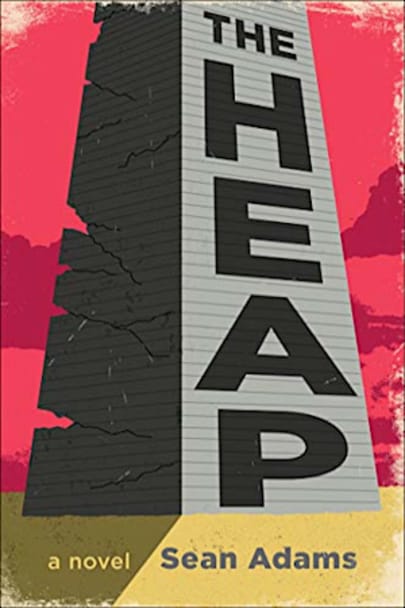A New York Times Book Review Editors’ ChoiceFeatured on recommended reading lists by the New York Times • New York Post • Library Journal • Thrillist • Locus • USA TODAY“The first great science fiction novel of 2020. “ —NPR “As intellectually playful as the best of Thomas Pynchon and as sardonically warm as the best of Kurt Vonnegut. . . A masterful and humane gem of a novel.” —Shaun Hamill, … “ —NPR
“As intellectually playful as the best of Thomas Pynchon and as sardonically warm as the best of Kurt Vonnegut. . . A masterful and humane gem of a novel.” —Shaun Hamill, author of A Cosmology of Monsters
Blending the piercing humor of Alexandra Kleeman and the jagged satire of Black Mirror, an audacious, eerily prescient debut novel that chronicles the rise and fall of a massive high-rise housing complex, and the lives it affected before – and after – its demise.
Standing nearly five hundred stories tall, Los Verticalés once bustled with life and excitement. Now this marvel of modern architecture and nontraditional urban planning has collapsed into a pile of rubble known as the Heap. In exchange for digging gear, a rehabilitated bicycle, and a small living stipend, a vast community of Dig Hands removes debris, trash, and bodies from the building’s mountainous remains, which span twenty acres of unincorporated desert land.
Orville Anders burrows into the bowels of the Heap to find his brother Bernard, the beloved radio DJ of Los Verticalés, who is alive and miraculously broadcasting somewhere under the massive rubble. For months, Orville has lived in a sea of campers that surrounds the Heap, working tirelessly to free Bernard—the only known survivor of the imploded city—whom he speaks to every evening, calling into his radio show.
The brothers’ conversations are a ratings bonanza, and the station’s parent company, Sundial Media, wants to boost its profits by having Orville slyly drop brand names into his nightly talks with Bernard. When Orville refuses, his access to Bernard is suddenly cut off, but strangely, he continues to hear his own voice over the airwaves, casually shilling products as “he” converses with Bernard.
What follows is an imaginative and darkly hilarious story of conspiracy, revenge, and the strange life and death of Los Verticalés that both captures the wonderful weirdness of community and the bonds that tie us together.
more



The Heap is a disturbing look into a fun-house mirror of our societal and economic ills.
The Heap by Sean Adams is recalls the type of winking political and societal satire presented in works by Vonnegut and Pyncheon, or in the film “Brazil” by Terry Gilliam. Adam’s novel wittily reflects the mindlessness and vapidity of our modern age within an alternative universe controlled by a corrupt bureaucracy that takes advantage of people’s worst tendencies. The story is simple but unusual- Orville is a man searching for his brother among the ruins of a collapsed building. “Los Verticalés” was originally designed as a type of utopian community, an enormous ever-expanding tower meant to provide everything people would need for existence within one self-contained structure. The Heap takes place after the building’s inevitable collapse, becoming a tale of the stalled rescue of the lone survivor of the tragedy, Bernard. Orville’s brother is still within the rubble, broadcasting continuously from his radio station and taking calls from the outside. The building’s original architects have enlisted people to conduct the search as they also unearth and sell off salvageable items. A whole community has sprung up around the effort, including: the diggers and an administrative support system; small businesses to provide amenities; and a band of people who once lived in the tower, having escaped the tragedy by not being home when the collapse occurred. These are the “displaced,” who write about what life was like in Los Verticalés, providing the reader some vital background information about the social experiment. Most of The Heap consists of Adams describing how the evolved community has established its own routines and fallen into a state of passive ennui over time. Lydia, one of Orville’s dig partners, is the only character who possesses political ambitions and is therefore consistently frustrated by the reluctance of others to change or put forth extra effort. Other secondary characters become allegories for human adaptation to loss and the drive toward comfort even if freedom must be sacrificed. It takes a bit too long, but eventually events occur that shake up the plodding existence of the Heap and its inhabitants- challenging them to stand up to the menacing corporate cabal that wants them to continue succumbing to their stupor. Orville, with his uniquely emotional connection to the place, is responsible for rebelling against the underlying power structure. His reluctant awareness and subsequent actions result in some unexpected and humorous ripple effects. Strange and sometimes slow-paced, The Heap is an interesting experiment in storytelling. Though probably not universally appealing, readers who are searching for something unique, smile-provoking and subtly pointed would do well to give this new novel a try.
Thanks to the author, William Morrow and Library Thing for an advance copy of this book in exchange for an unbiased review.
Somehow both timely and timeless, The Heap explores with heart what it means to live in the wake of strange new kinds of catastrophe.
As intellectually playful as the best of Thomas Pynchon and as sardonically warm as the best of Kurt Vonnegut, The Heap is both a hilarious send-up of life under late capitalism and a moving exploration of the peculiar loneliness of the early twenty-first century. A masterful and humane gem of a novel.